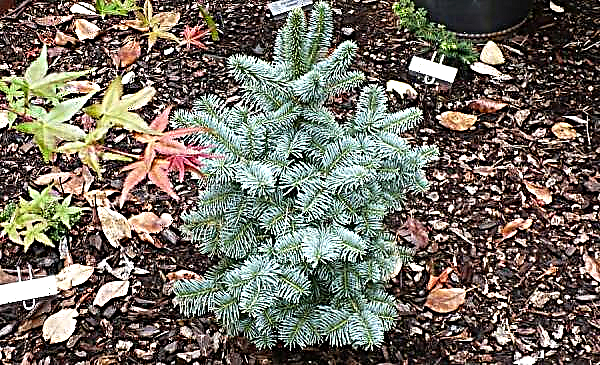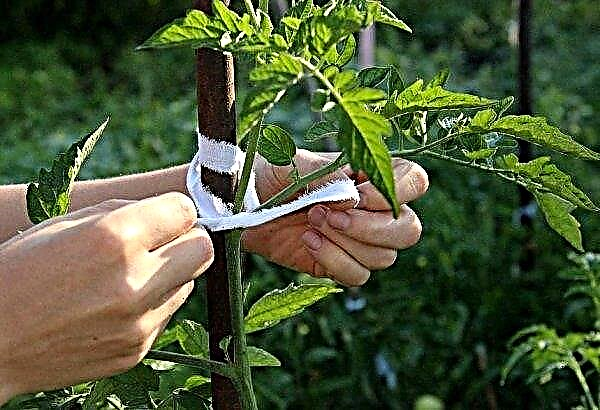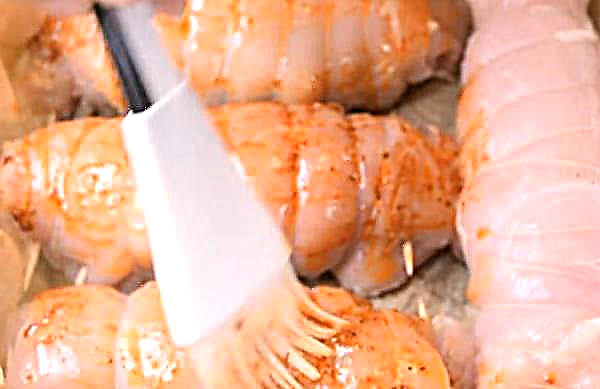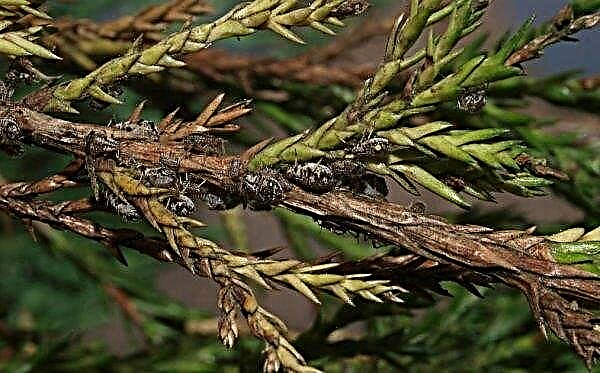Gabions as stylish and functional decorative elements are widely used as elements of garden improvement. They look great against the backdrop of modern city buildings, and at the same time go well with the rural landscape. From this article you will learn about the use of gabions in garden design, types of products and materials, the process of making such a structure with your own hands.
The use of gabion in landscape design
Gabions are voluminous frame structures of geometric shapes made of metal mesh or rods and filled with stones. This is a modern fashionable material for the construction of garden elements, especially fences, retaining reinforcements, decorative ornaments and outdoor furniture.
Until recently, they were mainly used to strengthen slopes and to build embankments in engineering and hydraulic structures. Today, they are more and more often used by landscape designers to decorate and improve the garden.
One of the reasons for the popularity of gabions is their versatility: traditionally they are used as retaining walls and fences, to create bizarre labyrinths and raised flower beds, allowing you to create a beautiful terraced landscape divided into different levels on an inclined surface.
Did you know? Gabions come from the military fortifications during the siege and defense, and the name translates as "big cell" (French. Gabion or from Italian. Gabbione).
Small mesh structures are suitable for landscaping as closed seats and benches, shelves for outdoor placement of flowerpots. They are suitable for decorating hearths and fireplaces, garden stairs, columns of arbors, creating decorative sculptures.
If you place LED elements inside the structure, you can get some kind of lamps for lighting the garden. You can even make fire inside, but structural structures with open fire require special selection of filler to withstand high temperatures and ensure safe operation.

Advantages and disadvantages of using gabions in landscape design
Gabions as elements of landscape design have quite a few advantages.
Important! For safety reasons, the gabion fence should not be higher than 2 m to avoid tipping over.
- Among them:
- aesthetics and architectural value - people love natural looking materials in the garden and the use of natural fillers (stones or pebbles) in a mesh structure is more attractive than concrete walls or metal fences;
- environmental friendliness - when creating designs apply 90% of natural materials;
- strength, ability to withstand heavy loads, with proper installation they do not require a foundation and fully support their weight;
- high permeability and durability - air and water pass through them without damaging the integrity of the structure and without causing wear and corrosion of the material; no additional drainage system is required;
- ease of installation and use - may require only a little preparatory work in the selected area to ensure stability;
- the structure is not attached to the ground, so it is with relative ease can be moved from one place to another.

The disadvantage of gabions may be their safety, especially when they are filled with less durable materials. If the filling elements crumble at the base, the gabion must be disassembled and the entire filling removed. Various dirt and leaves can accumulate between the stones - they should be cleaned regularly, preferably using pressurized water.
The nets themselves are very durable, but if you damage their coating when filling with stones, you will need additional tinting with varnish. The lack of designs can be considered the complexity of the installation of large and high sections, for the installation of which it is desirable to attract specialists.
Gabion types
The terms and definitions of gabions often cause people who have not encountered such specific products to work with, many questions - first of all, what are gabions and what does a “mattress” mean in construction terminology. Further, these issues are considered in detail.
All types of gabions (box-shaped, cylindrical, mattress-mattress) differ:
- by physical and technical characteristics - mesh parameters, shape, dimensions;
- functional application - construction, military affairs, garden design.
Video: Pebble Gabion Fence
Box gabions
This type of construction has a rectangle at the base and is made of double-twisted steel wire with hexagonal cells. The strength of steel increases the reliability of the structure and evenly distributes the pressure on the surface of the duct. Double twisting technology prevents the mesh from opening in the event of a break.
Dimensions of the structure can vary in the range:
- 1.5; 2; 3; 4 m in length;
- 0.5; 1 m in height;
- 1 m wide - this value ensures the reliability of the entire unified design, regardless of functional application.
Mesh boxes longer than 2 m are provided with partitions at a distance of 1 m from each other and from external walls, which increases the rigidity, stability and resistance of the structure to the pressure of the filler on the front part. Strength is increased by additional fastening in the form of wire strapping on opposite sides.

In addition to mesh materials, boxes are made by welding from metal rods. In such assemblies, the cells have a square shape, and the contact points are connected by welding.
Gabion boxes are mainly used as:
- retaining walls, both massive and reinforced;
- protection of bulk slopes, strengthening the banks of reservoirs and rivers;
- fences, acoustic screens, flower design;
- thresholds, steps, watersheds, foundations with increased loads;
- elements of small architecture - benches, fountains, garden furniture, flower pots.
It is undesirable to install the box on its side to reduce the size to 0.5 m - the stone filler crumbles down and the structure is deformed. In addition to the basic cubic shape, the boxes have many geometric options - they can be spherical, conical, pyramidal and other complex configurations. A variety of appearance makes these structures attractive for landscaping the site.
Mattress and mattress gabions (Renault mattresses)
A characteristic feature of gabion mattresses is their low height compared to other sizes. These are elements in the form of flat cubes, their height usually does not exceed 30 cm. Gabion mattresses are also called Renault mattresses, and they account for up to 80% of sales. They are characterized by elasticity and flexibility, which allows installation on moving soils and uneven surfaces; while the design does not lose functional properties.

Renault mattresses are made of hexagonal (hexagonal) double twisted wire mesh, which is very resistant to corrosion due to the additional coating with zinc and polymer. For mesh gabion mattresses, the most common standard heights are 17, 23, 30 cm, which is determined by the size of the cell. The length of the mattresses can be 3, 4, 5, 6 m, and the most typical size in a top view is 3 × 2 m.

Through each meter, transverse partitions are installed to increase stiffness. Reno mattresses are laid in the base of retaining walls in order to distribute loads, used in landscape construction to prevent shrinkage of the foundation.
In addition, they:
- lining gently sloping places, slopes and slopes;
- make out thresholds, steps, ladders;
- fix the bottom of reservoirs and pools.
Having bought mattresses with standard parameters, you can adapt them to the selected surface using nippers and a knitting wire, using a partition as a side mount.
Important! The design of Renault mattresses is flexible, so it is not recommended to install it on a rib when forming a fence without additional fasteners in the form of beams or a metal profile.
Cylindrical gabions
The name of this configuration speaks for itself - it is a cylindrical shape from a double woven hexagonal steel mesh with a filler made of stone. Length can be 2, 3, 4 m, diameter is usually 65 cm. In cylindrical gabions there are no stiffness diaphragms and partitions, therefore they are more flexible and mobile, which is convenient for laying on an uneven surface and creates uniform pressure on the ground.

Cylinders are used to protect against erosion of river banks, bridge supports. Laid on top of each other, they form a compact stone structure. The mesh is made of high quality steel wire coated with a thick layer of zinc or zinc alloy, which provides resistance to rust. In a particularly aggressive environment, as well as where a longer service life is required, the wire is coated with an additional protective polymer coating.

To strengthen the design, the wire of the edge surfaces has a larger cross section than the main material of the mesh. The flexibility of the structure, the ability to withstand external loads and evenly distribute them along the base makes it possible to use gabions in the design for terracing and strengthening soil on slopes and near water bodies, creating artificial islands, fences, walls, decorative pillars and columns.
What materials are needed for gabions
The characteristics of the materials used in the manufacture of gabions depend on the purpose and conditions of use of the structures - retaining walls, a high fence, reinforcing ponds or decorative ornaments. If in doubt, you can check with professionals what materials are best suited for your project.
Metal grid
The choice of mesh size and wire thickness will be a compromise between the stiffness of the gabion walls, the type of filler used and the amount of material costs.
In the manufacture of gabions, two types of mesh are used:
- double weaving with a hexagonal or rectangular cell;
- welded - with rectangular or square cells. In such gabions, you can choose any combination of mesh size and wire thickness.
The durability of the products is provided by a metal mesh, which is coated with a layer of zinc and aluminum alloy and is additionally protected by a polymer layer. This gives resistance to corrosion, and gabion can last up to 100 years.
The choice of mesh parameters (wire diameter 3, 4, 5 mm) depends on the planned load on the structure. The wire for the manufacture of the mesh should be complete, not damaged, with the ends fastened by the twisting method, and splicing is permissible only once in a segment of 20 m and should not be longer than 20 mm.
Today, most gabions are made of galvanized coated or stainless steel with different weights and different diameters - it can be flat rods, rods. The metal wire mesh around the filler material is much stronger than it looks, and when used properly, it acts as the main reinforcement of the structure, and not just the frame.
Filling stone
For a more practical use of gabions, heavy, strong and solid materials are used as filler, and most often stones are used as such a filling. This can be coarse pebbles, gravel, cobblestones, open pit rocks, basalt, granite, marble, limestone, slate, dolomite.

Gabion-filling stones are associated with natural nature and blend perfectly with the landscape decor of the garden. Using a variety of colors, you can get interesting color combinations and ornaments - for example, a dark base and a light top.
The filling elements must be at least 60% larger than the mesh cells in order not to fall out. But large specimens should not be taken, since numerous voids are formed, and the structure becomes sparse, inaccurate and less stable. Massive stone structures not only create durable fences, but also perfectly suppress noise - sounds are effectively scattered on the uneven surface of the filler.
Another advantage is the possibility of building on an uneven surface without preliminary soil preparation due to the large weight of the filling. Gabions filled with weather-resistant stones practically do not collapse and do not require maintenance. They are also environmentally friendly.

Other fillers
In addition to stones, for a more artistic use of gabions, you can use as a filling everything that corresponds to your design, style, to give the garden a special look:
- colorful pieces of tiles and ceramics;
- wooden cuts, cones, coconut shells, bamboo stems;
- metal cans, pipe pieces and profiles;
- roof tiles, broken brick, old clay pots;
- plastic containers and boxes;
- colored glass bottles and lump glass;
- fake diamond.

Light penetrates through the transparent fillers of glass and plastic, adding color to the composition. The effect can be enhanced by installing LED strips among the glass blocks. This type of filler initially looks interesting, but over the years it deteriorates, crumbles, and is washed out by the rain.

However, opening gabions and replacing the filling are possible. Other wire thicknesses are sometimes used, since a thinner mesh may be required to prevent the leakage of smaller filler materials.
DIY creation process
You can make a gabion design yourself from the initial stage - weaving the base, or by connecting together elements from ready-made purchased nets. Since the scope of gabions is wide, a variety of products require a different approach to manufacturing. Below is a brief instruction on making a flower bed, or garden flowerpot from gabion. This design can be attached to the wall in the garden or installed in the flower garden.
Did you know? The first, military gabions, consisted of light wicker baskets filled with earth, grass, leaves, snags, and were installed in the form of protective "walls" around the guns.
For manufacturing, you will need a basic galvanized wire mesh with a thickness of 1.4 mm, a knitting wire for assembling the structural components into a single unit, C-shaped staples, gloves, nippers, pliers, any stones with a diameter larger than the mesh mesh size, your favorite plant.

Procedure:
- Cut the elements from the building mesh that will form the bottom and sides of the gabion.
- Connect the mesh at the corners to the desired shape with a knitting wire to create an internal filling cavity.
- After bending the wires, attach the bottom of the gabion if you have a hanging basket in mind.
- Fill the space between the two walls with stones. Every 5-7 cm of filling, the mesh elements must be fastened with C-shaped jumpers so that the mesh does not diverge under the weight of the stones.
- Place the flower pots inside the gabion box and they will look very decorative.

When creating a garden flowerbed, the bottom of the gabion is missing. Agrofibre is laid on the ground under the construction so that weeds do not germinate and dirt does not get on the filler when watering or rain. Inside the basket, a welded tube-like tent is installed, which is filled with soil and a plant is planted there. More massive designs are performed by the same method, only a mesh with a large wire cross section is selectedso that the gabion does not lose shape under the weight of the stones and provides stability, strength and reliability to the product.
Gabions may seem a little rude, but their charm depends on how and how they are filled. Colorful stones, pieces of glass, lined ornaments or other interesting ideas make the garden really attractive. The big advantage of gabions is the cost-effectiveness and ease of installation, and the assembled design will last a long time.












